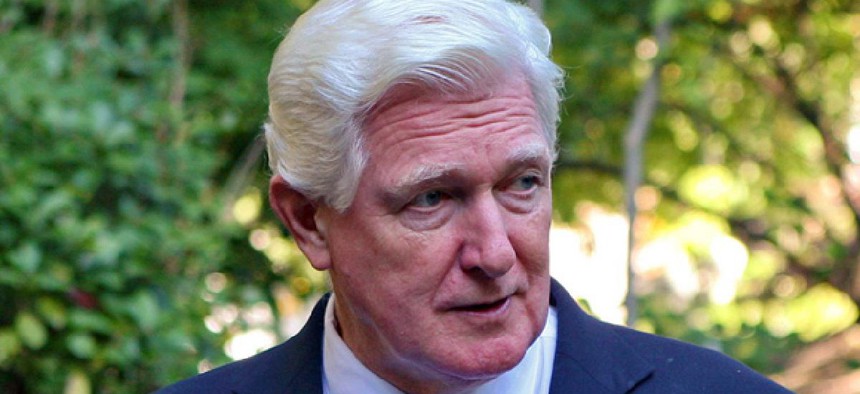
Flickr user cliff1066
House Democrat takes up Senior Executive Service reform
Proposal by Rep. Jim Moran aims to fix pay compression, and is largely similar to a Senate bill.
Rep. Jim Moran, D-Va., proposed legislation Wednesday that aims to reform the pay structure and performance management and recruitment of the Senior Executive Service.
Moran’s proposal is considered a companion bill to a Senate version that Sen. Daniel Akaka, D-Hawaii, introduced in March. That bill, the 2012 Senior Executive Service Reform Act, aims to attract more government employees into the top ranks and limits the number of political appointees in a federal agency, creating more space for SES members.
The goal of Moran’s bill is similar -- provide more financial incentives to become a senior executive by reforming the compensation model so there is more disparity between the salaries of the highest paid General Schedule employees and the lowest paid SES members. According to a 2012 Senior Executives Association survey of GS-14 and GS-15 employees, many qualified candidates were dissuaded from accepting SES positions due to a skewed risk-to-reward ratio; in some cases, GS-15 employees could earn the same salary in their current job as they would if they moved into the SES and took on extra responsibilities.
Many of the reforms that Moran proposed are identical to those in Akaka’s bill, according to an analysis from the Senior Executives Association. Moran’s bill would decrease the maximum percentage of political appointees in a government agency to 15 percent from 25 percent. Like Akaka’s bill, the House version increases transparency given to executives on their ratings and performance appraisals and allows SES members to count bonus awards toward their high-three salary calculation upon retirement. Currently, SES members do not receive comparability adjustments such as cost-of-living increases since SES pay is performance-based.
There are a few differences between the bills, according to SEA. Moran’s measure includes more provisions related to the hiring process. It would eliminate the current requirement that SES candidates complete a complicated Executive Core Qualification system application process and instead have them submit a resume and cover letter. It also would require agencies to evaluate vacant positions to determine whether they should be reclassified.
Both proposals are part of a governmentwide discussion on reforming the SES to attract more talented applicants into the government’s top ranks. The Congressional Budget Office estimates the number of retirees across the federal government will grow 10 percent during the next decade.
The Senate bill awaits consideration in the Homeland Security and Governmental Affairs Committee.
“We’ve been working on this for three years,” SEA President Carol A. Bonosaro said of both pieces of legislation. “We think there are a number of issues with regard to the SES that need to be addressed and will be addressed by Rep. Moran’s bill. And they are of particular importance right now, as we are facing a substantial number of SES retirements and are concerned about what will attract the interest of the next generation.”
The Partnership for Public Service also praised the bill and its co-sponsors, Rep. Gerry Connolly, D-Va., and Rep. Chris Van Hollen, D-Md.
“The reforms outlined in this legislation will ensure that agencies and departments develop the very best talent from within our government and attract external talent to hold the top career managerial and policy positions,” Max Stier, the Partnership’s chief executive officer and president, said in a statement Wednesday.
The Partnership also is urging Moran to add provisions to his bill that would require SES candidates to have experience working at different agencies and at various levels of government service, Stier said.






